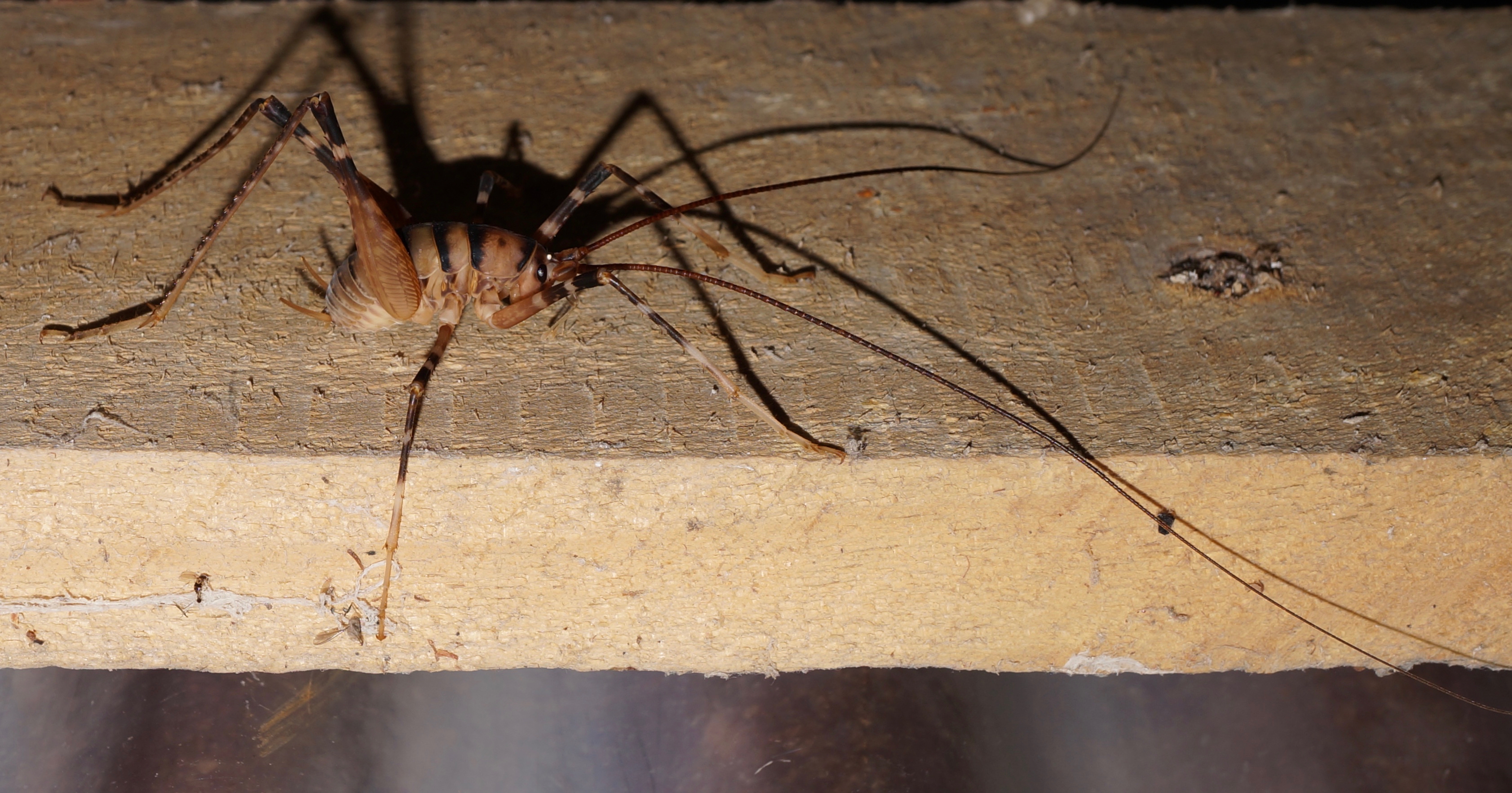Spider crickets are intriguing insects that often surprise homeowners with their long, spindly legs and sudden jumps. Don’t fear, though; they might look a bit creepy, but these creatures are harmless and do not bite humans.
What Are Spider Crickets?
Spider crickets – also known as cave crickets, cave wētā, land shrimp, sand treaders, jumping, and camel crickets – generally refer to a family of insects known as Rhaphidophoridae. They’re comprised of at least 1,100 species and are distributed across every continent on the Earth except Antarctica (the freak continent).
Species vary slightly in appearance, but they are all wingless, have long antennae, and possess large hind legs that enable them to jump significant distances. The most common genus in North America is Ceuthophilus.
They’re typically found in caves, burrows, cellars, and under logs, preferring dark and humid environments. This is why you can occasionally come across spider crickets in a basement or old buildings.
Research has shown that spider crickets are basically cave-dwelling scavengers that will eat anything, from peanut butter and jelly to rancid liver and American cheese.
Despite their nickname, they are not spiders – they are insects. Spiders are arachnids, so they don’t even fit in with the taxonomic class of Insecta. On the other hand, Rhaphidophoridae are firmly in the bracket of Insecta, fitting in with the same order as grasshoppers, locusts, and other crickets.
If you think they look like a prehistoric relic from the age of the dinosaurs, you’re not wrong. A 2024 study found that Rhaphidophoridae originated 138 million years ago throughout the Pangea supercontinent. As the landmasses moved apart, different lineages of Rhaphidophoridae evolved on each continent, flourishing into the diverse group we still today.
So, it’s likely that dinosaurs walked side-by-side with an ancient ancestor of spider crickets. Given their archaic features, it’s likely they haven’t changed too much from this time. The same 2024 study argued that this family evolved winglessness in response to the low temperatures in the Mesozoic era.
Another species of spider cricket, Pachyrhamma edwardsii, pictured in New Zealand.
Are spider crickets dangerous?
No, spider crickets are not dangerous. They do have a tendency to jump directly at things that startle them, like a human moving boxes in their basement. This is a defense mechanism designed to frighten potential predators. It might give you a scare, but they’re fairly harmless to humans as they don’t have fangs or a venomous bite.
How to get rid of a spider cricket
If you want to get rid of spider crickets, the Farmers’ Almanac has this advice:
Indoors:
- Seal gaps and cracks: Use caulk to properly seal your home’s foundation and close off potential entry points for spider crickets.
- Control humidity: Moisture is a major attractant. Run a dehumidifier in damp areas. While it might take some time, reducing humidity can encourage them to move on.
- Declutter damp spaces: Keep basements, garages, and other dark areas tidy. Removing clutter limits hiding spots, and adding lighting can help deter them as well.
- Ensure good ventilation: Make sure crawl spaces are well-ventilated to prevent damp conditions.
Outdoors:
- Relocate woodpiles: Store firewood at least 6 meters (20 feet) away from your home to discourage pests from lingering.
- Keep trash bins away: Position garbage cans as far from your house as possible to minimize attraction.
- Cut tall grass: Regularly mow your lawn to eliminate potential cover for crickets.
- Consider reducing mulch: As a final step, you might want to remove or at least thin out mulch, which can retain moisture and offer shelter.
Source Link: Spider Crickets Are Like A Prehistoric Throwback To The Age Of Dinosaurs
